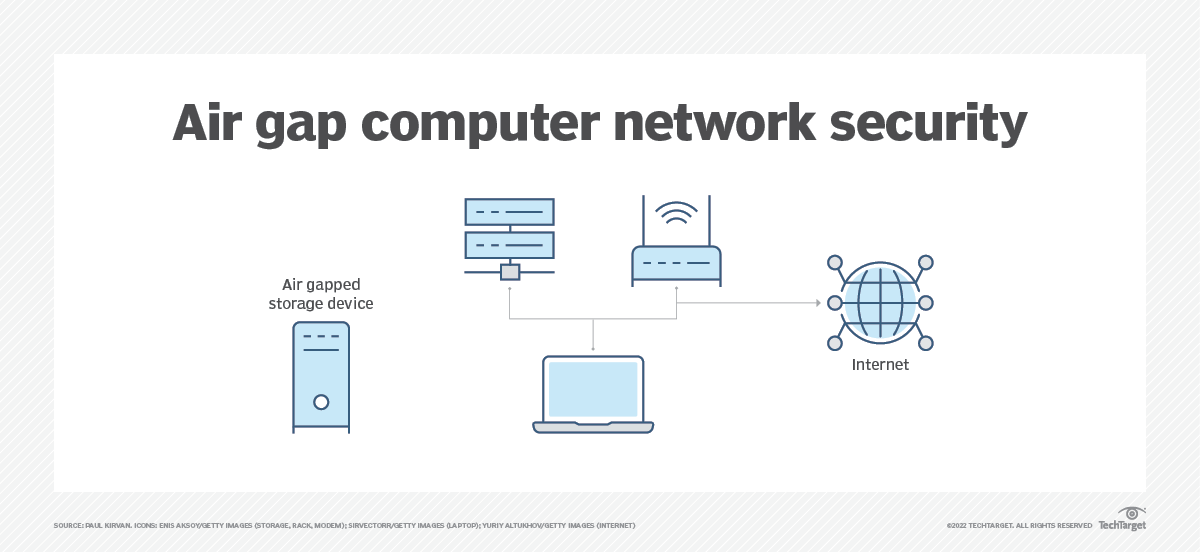

Air gapped systems how to#
How to Stay Secure When You Can’t Air Gap: VPN vs. Air gapping a computer involves disconnecting cables and disabling all network hardware. That means disabling WiFi and Bluetooth, disconnecting from the ethernet cable, and double checking that no other forms of communication or data transference are available. In order to air gap a computer, you’ll need to completely disconnect it from everything else. The idea is to disconnect the individual device from any outside networks or information, and it can be used for reasons ranging from increased personal privacy to improved performance of non-network applications. More on Enterprise Networks: Understanding VPNs: The Pros and Cons of IPSec and SSL How Do You Air Gap a Computer?Īir gapped computers closely resemble air gapped networks, but they’re more focused on the device and personal use levels. But these require a human with physical access to both machines, along with proper authentication credentials. Think of these as hidden paths or special access transportation that only authorized travelers can use to access your air gapped network. In the same way, adding a gap of air between your private network and other public networks wards off most attacks because the attack vector has been complicated through isolation.ĭata movement in an air gapped network can only happen via external, non-network means: removable hardware or media like a USB drive can be used to transfer information in and out of an air-gapped network, and transient devices like laptops can be authorized to connect to the air gapped network, though with very specific permissions. The valley between them is a gap of air, one that few travelers will want to take the time and risk to traverse. The bridges and helicopters in this scenario exemplify the external network connections, like public network access and email messages, that make it easier for hackers to latch onto and gain access to a private network.īut let’s say that these two mountains are in a highly isolated part of the world and there’s no form of transportation or other access to cross between the mountains. Readers also Read: End-to-End Encryption: Important Pros and Cons Taking a Look at Air Gapped NetworksĪn air gapped network is a network that has been separated from other public and private networks with an effective “gap of air.” This means that the air gapped network is disconnected from the public internet, external email, and any other ways of directly communicating from one network to another.Ĭonsider this visual: if two mountains are separated by a valley, the only way to make it to the other mountain is via a direct path or form of transportation, which could be anything from a bridge to a helicopter that will fly you over there. Although it won’t work for every business model, air gapped networks can provide one of the highest levels of security to enterprise infrastructure when they are managed closely, stopping many potential breaches in their tracks. There is some good news though: businesses that are investing in better network security infrastructure and policies, such as incident response and security automation, are saving anywhere from $2 million to $3.58 million when a breach does occur. According to IBM’s 2020 Cost of a Data Breach Report, the average cyberattack costs a business $3.86 million, and the United States’ average cost per breach has reached $8.6 million. Ours is a deeply interwoven and breachable world, which often means trouble for enterprise security.


 0 kommentar(er)
0 kommentar(er)
